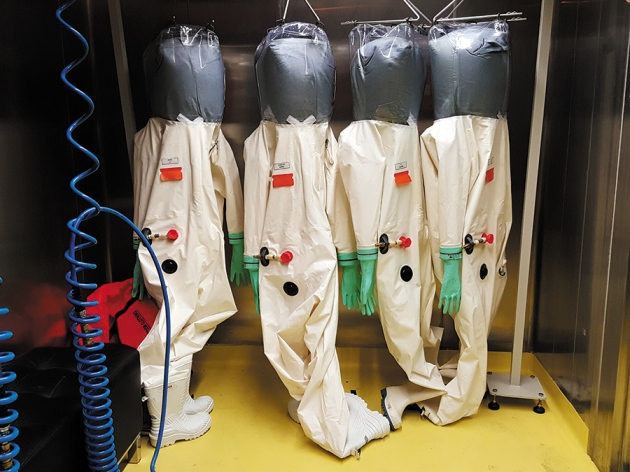
Is an epidemic that has now reached the United States and has 11 million people in China quarantined linked to glacial ice containing an ancient virus and a maximum-security biolab located at the epicenter of the outbreak?
As the World Health Organization considers if the newly discovered coronavirus in the Chinese city of Wuhan that has killed at least 17 is an outbreak of international concern, ironically scientists in the area are studying 33 unknown 15,000-year-old viruses, 28 of which are from never-before-seen virus groups, that had previously been locked in a nearby glacier on the northwestern Tibetan Plateau.
“We are very far from sampling the entire diversity of viruses on Earth. In a worst-case scenario, this ice melt could release pathogens into the environment,” says Chantal Abergel of the French National Centre for Scientific Research.
Wuhan, ground zero of the epidemic, is also the home to the National Bio-safety Laboratory of the Communist People’s Republic of China, the first biosafety level-4 (BSL-4) lab to open on the Chinese mainland. The outbreak began shortly after the conclusion of the 2019 Military World Games, the first international military sports event ever to be held in China, with 236,000 volunteers and 10,000 athletes from over 100 countries competing in 27 sports. Millions watched the games that began with opening ceremonies in a stadium seating 60,000 spectators in the Sports Center of Wuhan.
The Chinese Academy of Sciences approved the construction of Wuhan’s 300 million yuan (US$44 million) BSL-4 laboratory in 2003 during the SARS (severe acute respiratory syndrome) epidemic. France was integral in the designed and constructed of the lab as part of a 2004 cooperative agreement between the two governments on the prevention and control of emerging infectious diseases.
Bruno Lina, director of the VirPath virology lab in Lyon, France, says “The world is facing more new emerging viruses, and we need more contribution from China, In particular, the emergence of zoonotic viruses — those that jump to humans from animals, such as SARS or Ebola — is a concern.” The new outbreak in Wuhan is confirmed to have been a zoonotic virus that started in an animal and spread to humans but scientists do not yet know what animal may have caused outbreak in Wuhan that began in December. Human-to-human transmission of the virus happens when someone comes into contact with an infected person’s cough, sneeze or handshake.
